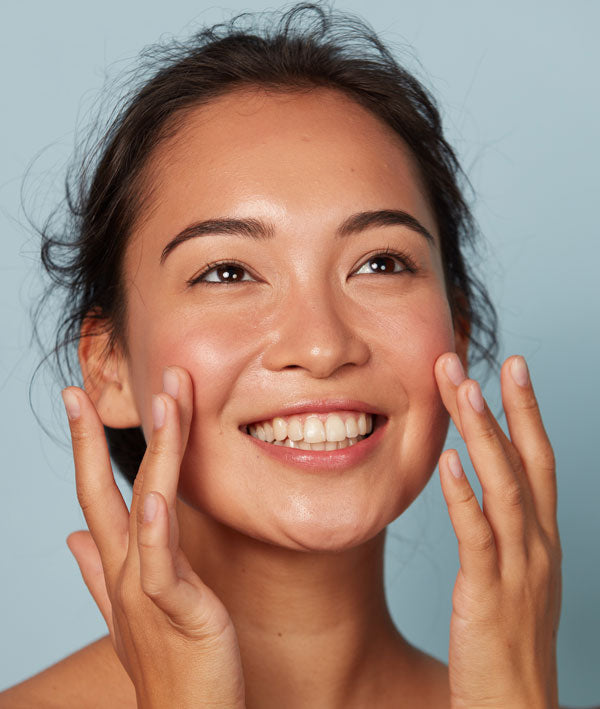It’s no surprise that we’re big proponents of face serums. By flooding the skin with high-performance active ingredients, a serum has the power to completely restore and rejuvenate the skin. To get the best results from these transformative products, you need to be sure you are using them properly. Here’s our ultimate guide to using face serums just like a dermatologist.
What are Face Serums?
Face serums are by far the most effective over-the-counter topical solutions for treating specific skincare concerns. They are formulated with potent concentrations of key ingredients that work to deliver dramatic, visible results. In many cases, a serum is also loaded with supporting ingredients that help soothe, hydrate, and strengthen the skin.
No matter the issue you are looking to target, a high-quality serum can help. By working the right formula into your routine, you’ll be able to achieve your skincare goals to unlock your best, healthiest skin yet.
Common Benefits
Every serum has different benefits, as each is designed to address specific concerns. However, serums typically fall into a few main categories.
First we have hydrating serums, such as the Hyaluronic Pure Boost Serum. Using ingredients like hyaluronic acid or glycerin, a hydrating serum will flood the skin with hydration to unlock plump, dewy skin.
There are also brightening serums, which help fight dullness and fade the look of discoloration for an even, radiant complexion. Some of the most commonly used ingredients include vitamin C, licorice root extract, and niacinamide.
Anti-aging serums are also incredibly popular. A good anti-aging serum will stimulate the production of collagen, the protein that gives your skin strength and structure. By doing this, an anti-aging serum will help enhance firmness and elasticity while also softening the look of fine lines and wrinkles.
Many anti-aging serums also work as brighteners, which means you can unlock multiple benefits with just one formula. For example, a high-quality vitamin C serum will banish dullness and dark spots while supporting collagen production to promote a bright, youthful complexion. It also works as an antioxidant serum, which leads us to our next category.
Antioxidant serums are loaded with nourishing ingredients that defend the complexion against harmful free radicals, which can damage the skin and cause visible signs of aging. Some of the most powerful serums will contain a blend of both antioxidants and antioxidant-rich ingredients. Take for example our CoQ10 Boost Serum, which uses the power of antioxidant ingredients like coenzyme Q10, green tea leaf extract, licorice root extract, and vitamin E to defend and nourish the skin.
How to Choose a Serum
The world of face serums can feel overwhelming. There are a ton of different formulas out there, and it can be tricky to decide which will actually work best for you. Here are a few things to consider to narrow down your options and select the best serum for your unique needs.
The first thing you’ll want to do is decide which specific concerns you’re looking to target. For example, if your skin is feeling dehydrated, you’ll want to look for a hyaluronic acid serum that will quench your thirsty complexion. Alternatively, if you’re struggling with dullness, you might want to incorporate a vitamin C serum into your routine to enhance your skin’s natural radiance.
Once you’ve narrowed down your concerns, it’s time to look for formulas that are suitable for your skin type. Some serums are specifically designed to suit all complexions, whereas others are formulated for specific skin types. Finding a serum that works well for your skin type is key to getting the best results.
Finally, you’ll want to assess the ingredients, making sure the formula is loaded with highly effective active ingredients that will actually do what the label claims! We also recommend skipping formulas made with additives that may aggravate the skin, such as fragrances.
When to Use Them
In general, serums can be used every single day – often up to two times per day. That said, there are some serums that are designed to be used less frequently, as the active ingredients may irritate the skin when overused. You’ll want to refer to the instructions on the specific product you’ve chosen.
How to Use Them
You will want to apply your serum after cleansing your skin. If you use a toner in your routine, apply it first, and then follow it with a serum.
If you’re layering multiple serums, you’ll want to follow the thinnest to thickest rules. Thinner solutions should be applied first so that they can effectively penetrate the skin. After that product absorbs, you can follow up with the richer solution.
To finish off your skincare routine, seal everything in with a moisturizer. During the day, sunscreen application should be your final step.
Do You Need Sunscreen and Moisturizer?
Serums, moisturizers, and sunscreens all perform different functions, which means all are needed in a foundational skincare routine. While some serums hydrate the skin (or, in other words, infuse the complexion with water), a moisturizer creates a protective seal that prevents water loss and enhances barrier function. Properly moisturized skin is essential for maintaining skin health.
A serum also can’t do the work of a sunscreen. While some serums do provide some protection against environmental aggressors, in order to properly defend your skin against the sun’s damaging rays, you’re going to need to use sunscreen.
Mistakes to Avoid
To wrap things up, here are a few common mistakes you’ll want to avoid when using a serum in your routine:
- Avoid layering serums with ingredients that don’t play well together. For example, retinol and glycolic acid should be used separately, as they can be too aggravating when used in tandem. A quick Google search of the active ingredients will help you determine if you can use your products together!
- Research the best application method for the exact formula you’re using. As an example, hyaluronic acid works especially well on damp skin, whereas you’ll want to apply vitamin C to a dry face.
- Don’t forget the neck and chest! These areas are often neglected, but you’ll want to give them the same attention as the face.







